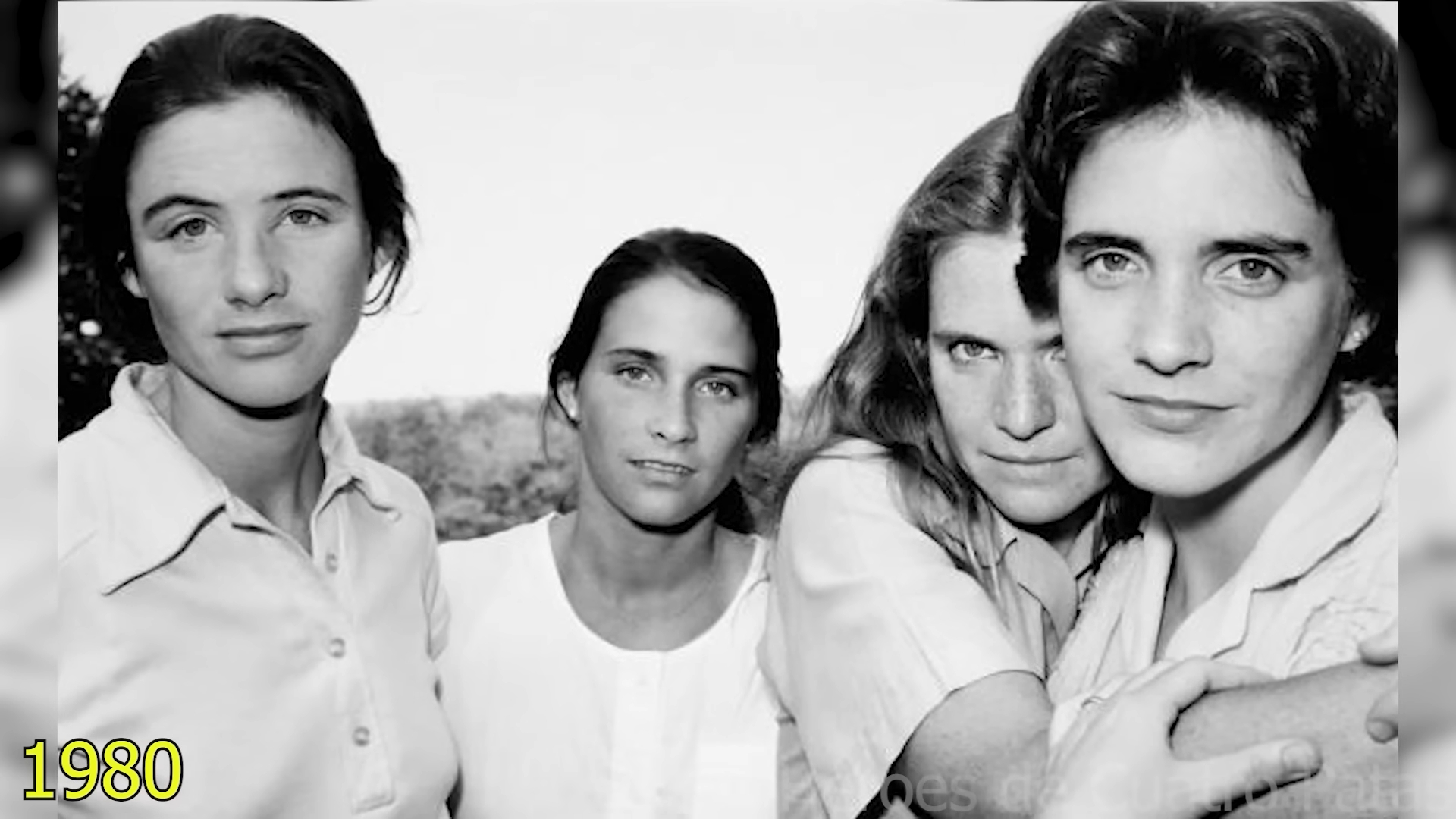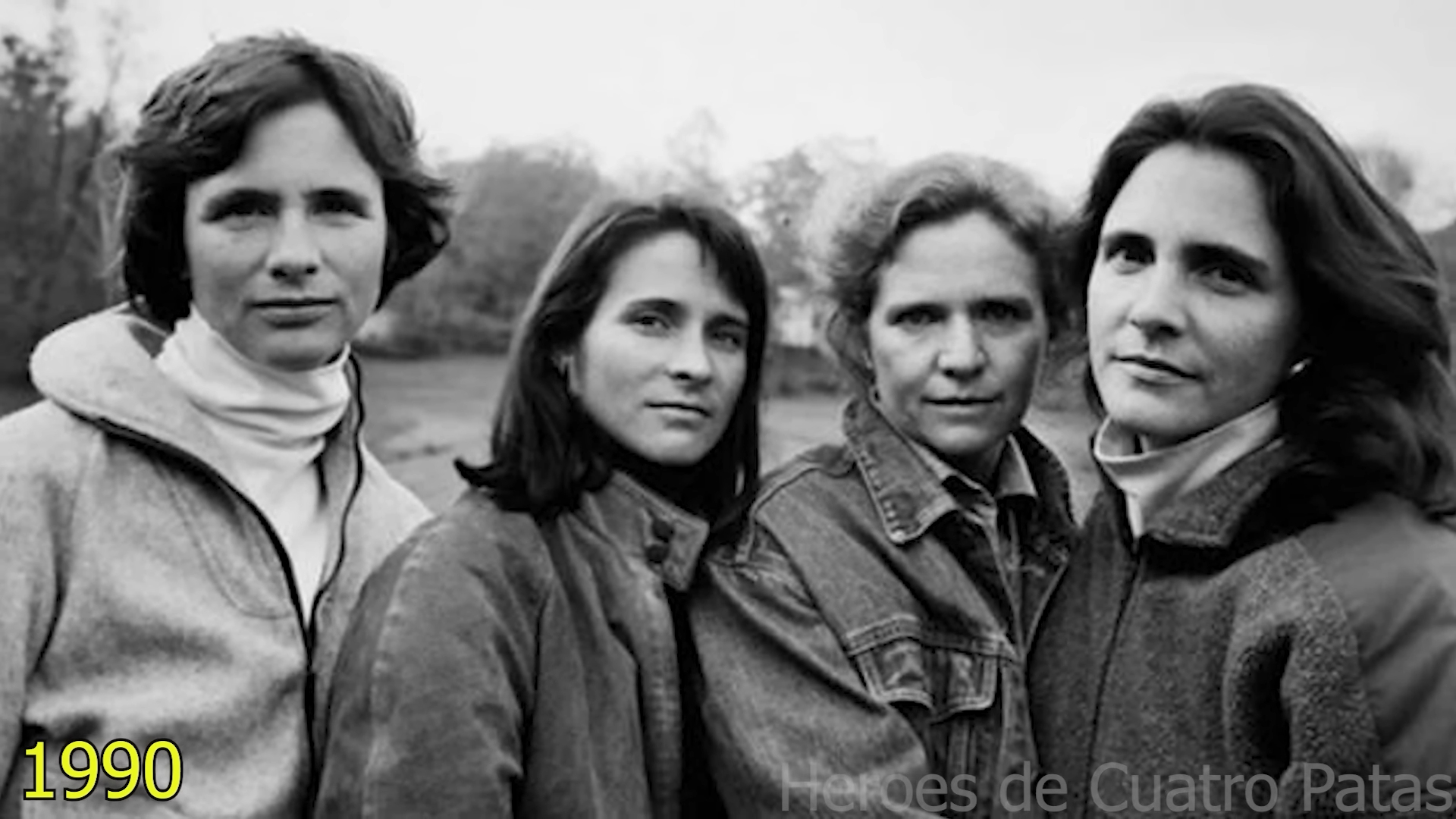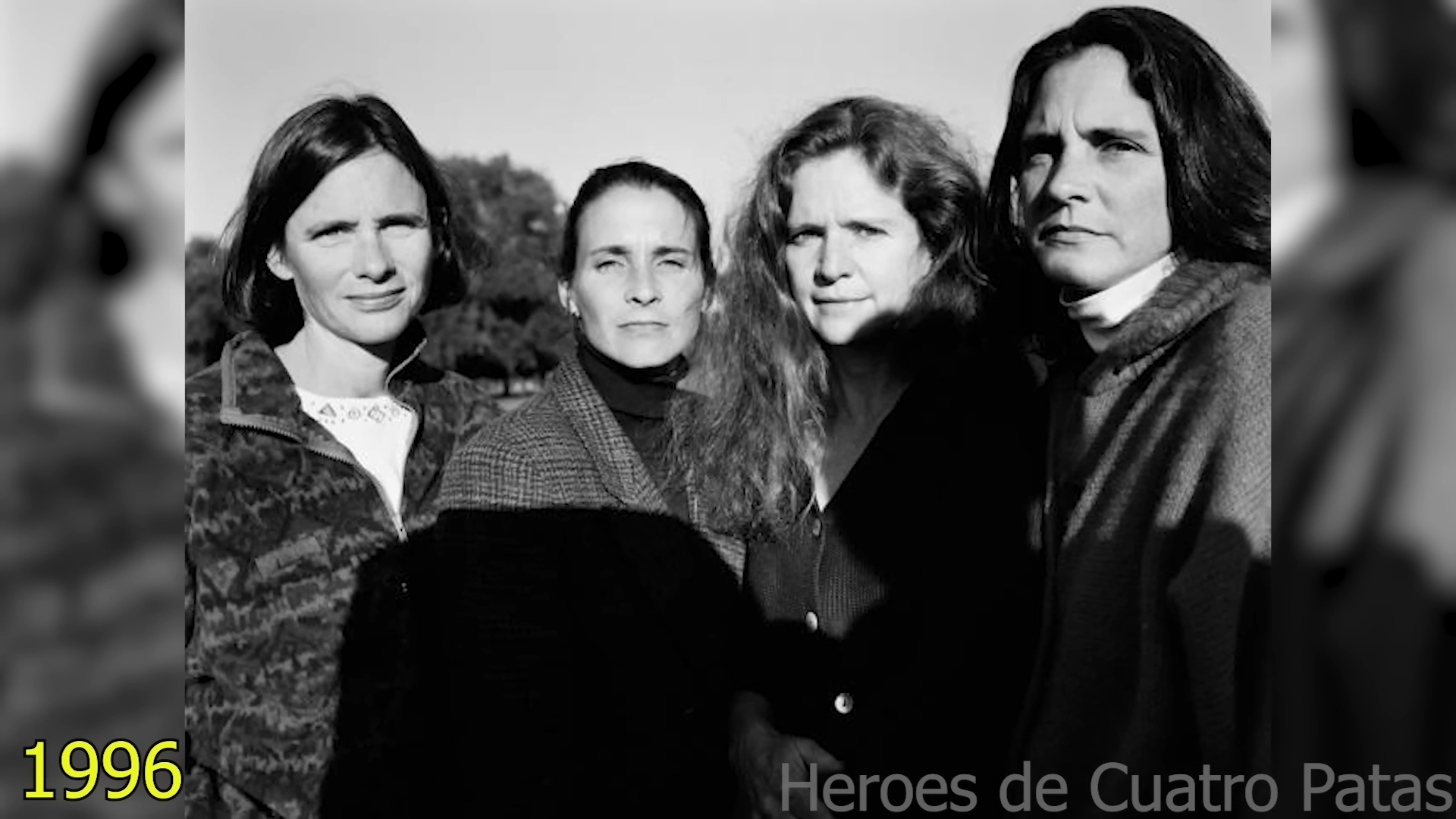
Introduction to the Project
In 1975, a remarkable journey began that would capture the essence of time and the beauty of aging through the lens of a camera.
Nicholas Nixon, a talented photographer, visited the parents of his wife in Massachusetts.
On a warm day in the garden, he encountered four sisters—Gretchen, Mimi, Beebe, and Laurie—engaged in lively conversation.
The sunlight reflecting off their faces inspired him to ask if he could take their photograph.
Little did he know that this simple request would initiate a profound project that would last for four decades, changing not only the lives of the sisters but also altering the way we perceive the passage of time and the concept of beauty.
The first photograph taken by Nixon was in black and white, using an 8×10 large format camera that required precision and patience.
This choice was intentional, as the large format allowed for incredible detail, capturing every line and expression on the sisters’ faces.
When the photo was revealed, it transcended a mere portrait; it embodied youth, hope, and the innocence of four young women standing on the brink of their lives.
This initial image set the stage for an annual ritual that would document their lives, showcasing the subtle changes that occur over time.

The Annual Ritual
As the years rolled on, Nixon proposed to the sisters that they continue this photographic tradition each year.
The sisters agreed, thinking it would be a short-lived project—perhaps lasting a few years.
However, this annual photo session evolved into a significant documentary endeavor, becoming one of the most poignant explorations of aging in photography.
The rules were simple: one photograph each year, always in the same order—Gretchen, Mimi, Beebe, Laurie—always in black and white, always using natural light, and without any makeup or special preparations.
This authenticity became a hallmark of the project.
Each session turned into a cherished occasion, a time for the sisters to reconnect, share stories, and reminisce about their lives together.
Over the years, the selection of the final photograph became a more serious affair.
Initially, they would quickly choose the best shot, but as time passed, they began to engage in thoughtful discussions about the nuances of each image.
They examined lighting, expressions, and the emotions reflected in their eyes.
This process deepened their bond and created lasting memories.

Life Changes and Challenges
Throughout the 40 years of this project, the sisters experienced numerous life events—weddings, divorces, births, and losses.
Each year brought its own set of challenges and triumphs, yet they remained committed to their annual photo shoot.
Even during difficult times, such as when one sister faced serious illness, they found the strength to stand together before the camera.
This unwavering dedication illustrated the power of familial bonds and the importance of support during life’s trials.
The evolution of their appearances over the years was striking.
From the vibrant fashion of the 1970s to more classic styles, their clothing choices reflected changing trends.
Their hairstyles transformed as well, from youthful experimentation to embracing natural grays that symbolized wisdom and experience.
The physical changes were profound, but the most notable transformations were in their expressions and body language.
Initially, each sister seemed to inhabit her own world, but as the years passed, they leaned into each other, their postures becoming more relaxed and open.
This shift mirrored their growing closeness and the deepening of their sisterly bond.

The Emotional Impact of Aging
As time progressed, the emotional depth captured in each photograph became increasingly significant.
The sisters’ faces began to tell stories of their lives—the laughter, the tears, the joy, and the sorrow.
Each wrinkle and gray hair became a testament to their shared experiences and the passage of time.
This project was not just about documenting aging; it was about celebrating life in all its complexities.
The final images, especially the last photograph taken at the end of the project, evoke a profound emotional response.
The sisters, now older, embraced each other with a tenderness that spoke volumes about their shared history.
Their eyes, filled with wisdom and peace, reflected the journey they had undertaken together.
The warmth of Mimi’s smile, once guarded and serious, now radiated a sense of comfort and sincerity that touched the hearts of those who viewed the image.

Cultural Significance and Artistic Recognition
Nixon’s project gained international recognition, with exhibitions in prestigious galleries, including the Museum of Modern Art in New York and the Louvre in Paris.
However, for the sisters, it was never about the accolades or the art itself.
It was about their personal story—a narrative of love, resilience, and acceptance.
In a society often obsessed with youth and beauty, the Brown sisters presented an alternative narrative, showcasing that aging is not something to be hidden but rather embraced.
The project also highlighted the often-overlooked beauty of women over 40, challenging societal norms that render them invisible.
The sisters demonstrated that age is not a detriment but an opportunity to gain wisdom and grace.
Their photographs became a powerful statement against the pressures to conform to unrealistic beauty standards, encouraging others to find pride in their own journeys and experiences.

Conclusion: A Legacy of Acceptance and Love
The Brown sisters’ story teaches us invaluable lessons about the nature of beauty and the importance of family connections.
Their journey, captured through Nixon’s lens, transcends the realm of photography; it becomes a universal message about humanity, dignity, and the acceptance of life’s inevitable changes.
The tears shed by viewers upon seeing the final photograph are not tears of sadness but recognition—seeing their own stories reflected in the sisters’ experiences.
In a world that often seeks to deny the passage of time, the Brown sisters embraced it with open arms, transforming the narrative of aging into one of celebration.
Their legacy continues to inspire individuals worldwide, reminding us that true beauty lies in authenticity, acceptance, and the enduring bonds of love that grow stronger with time.

 ¡Vergüenza total! Alejandra y Vania se mojan y el papá de Said se pelea en boda de alto voltaje
¡Vergüenza total! Alejandra y Vania se mojan y el papá de Said se pelea en boda de alto voltaje 


 ¡Infidelidad y escándalo! Magaly destroza a Mario Irivarren tras traicionar en la boda de Ale
¡Infidelidad y escándalo! Magaly destroza a Mario Irivarren tras traicionar en la boda de Ale 







